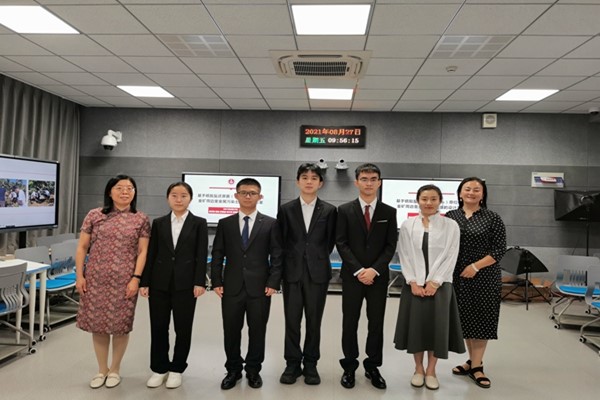
On August 28th, the 14th“Linuo Ritter Cup”National University Student Social Practice and Science Contest on Energy Saving & Emission Reduction, concluded at Shandong University. Our university's team achieved excellent results: winning 1 national second prize, 6 national third prizes, and for the 5thconsecutive time, the Outstanding Organization Award.
Our university has consistently placed great importance on this competition over the years. With the support of the Office of Academic Affairs, School of Chemical and Environmental Engineering established a competition coaching team led by Professor Yu Caihong, Associate Professor Zhang Liping, and Professor Wang Qibao. With assistance from the "Green Roots and Shoots" student organization, preparations for the on-campus National University Student Social Practice and Science Contest on Energy Saving & Emission Reduction began in October 2020, involving promotion, mobilization, organization, and selection efforts. By April 30, 2021, a total of 59 submissions were finalized. Following expert reviews, 20 teams proceeded to the defense stage on May 15, among which 15 teams were selected to represent our university in the national competition.
After evaluation by the competition committee, the project "Design of In-Situ Remediation of Heavy Metal Polluted Soil around Gold Mines using Sulfate-Reducing Bacteria" (mentored by Professor Yu Caihong and Ma Yan, with students Fang Songjun, Cao Neng, Zhang Puhan, Feng Zichen, Yin Yufan, Li Qianya, and Lv Jianxiang) from School of Chemical and Environmental Engineering entered the national finals and won a second prize.
National University Student Social Practice and Science Contest on Energy Saving & Emission Reduction is the only national event organized by the Ministry of Education's Higher Education Department. It ranks among the top competitions in the National University Competition Rankings, known for its significant social impact, high quality of entries, and fierce competition. This year's competition attracted participation from 514 universities, with 5201 valid submissions and over 30,000 participants, marking a historical high in the number of universities and submissions.